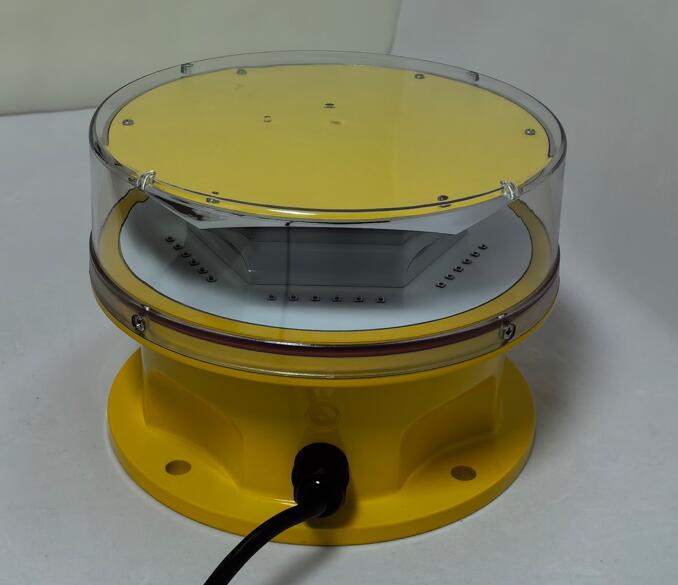In an increasingly vertical world where skyscrapers, wind turbines, and telecommunication towers dominate the skyline, obstruction lighting has become an indispensable safety feature. These specialized lights serve as silent sentinels, preventing collisions between aircraft and man-made structures while ensuring compliance with stringent aviation regulations.
As technology evolves, obstruction lighting has transitioned from simple incandescent bulbs to advanced LED and solar-powered systems. This article explores the critical role of obstruction lighting, its modern advancements, and its impact on global safety standards.
Why Obstruction Lighting Matters
The primary purpose of obstruction lighting is to enhance visibility for pilots, especially during low-light conditions or adverse weather. Key applications include:
Aviation Safety: Warns aircraft of tall structures like towers, cranes, and bridges.

Wind Energy: Marks wind turbines to prevent collisions in rural and offshore locations.
Urban Infrastructure: Ensures skyscrapers and stadiums do not pose hazards to low-flying aircraft.
Maritime Navigation: Guides ships near offshore platforms and coastal structures.
Without effective obstruction lighting, the risk of catastrophic accidents increases significantly. Regulatory bodies such as the FAA (Federal Aviation Administration) and ICAO (International Civil Aviation Organization) mandate strict lighting requirements to mitigate these risks.
| obstruction lighting |
Types of Obstruction Lighting Systems
Modern obstruction lighting comes in several configurations, each designed for specific scenarios:
1. Low-Intensity Obstruction Lights (L-810)
Used for structures below 45 meters (148 feet).
Typically steady-burning red lights.
Common on small buildings, power lines, and construction cranes.
| obstruction lighting system |
2. Medium-Intensity Obstruction Lights (L-864, L-865)
Suitable for structures between 45 and 150 meters (492 feet).
Red or white flashing lights for better visibility.
Often installed on telecommunication towers and mid-rise buildings.
3. High-Intensity Obstruction Lights (L-856, L-857)
Required for structures exceeding 150 meters.
Bright white strobes visible from long distances.
Used on skyscrapers, tall chimneys, and offshore platforms.
4. Dual Lighting Systems
Combine steady red lights with white strobes for optimal day/night visibility.
Enhances safety in varying weather conditions.
The Shift to LED Obstruction Lighting
Traditional incandescent and halogen obstruction lighting systems are being rapidly replaced by LED technology due to several advantages:
Energy Efficiency: LEDs consume up to 80% less power than conventional bulbs.
Longer Lifespan: Lasts 50,000-100,000 hours, reducing maintenance costs.
Enhanced Durability: Resistant to vibrations, extreme temperatures, and moisture.
Smart Control Capabilities: Remote monitoring and automatic brightness adjustment.
Additionally, solar-powered obstruction lighting is gaining traction in remote locations where grid electricity is unavailable.
Innovations in Obstruction Lighting Technology
Recent advancements are making obstruction lighting smarter and more efficient:
1. Aircraft Detection Lighting Systems (ADLS)
Uses radar or infrared sensors to activate lights only when aircraft are nearby.
Reduces light pollution and energy consumption.
2. Wireless Monitoring & IoT Integration
Real-time diagnostics and alerts for maintenance teams.
Cloud-based tracking ensures compliance with aviation regulations.
3. Adaptive Lighting Systems
Automatically adjusts brightness based on ambient light and weather conditions.
Improves visibility while conserving energy.
Environmental and Economic Benefits
The modernization of obstruction lighting contributes to sustainability in multiple ways:
Lower Carbon Footprint: Energy-efficient LEDs reduce power demand.
Reduced Light Pollution: Directional lighting minimizes skyglow.
Decreased Waste: Longer-lasting LEDs mean fewer replacements and less landfill waste.
Obstruction lighting is a critical yet often overlooked component of modern infrastructure and aviation safety. With advancements in LED technology, smart monitoring, and solar power, these systems are becoming more efficient, reliable, and environmentally friendly.
As urbanization and renewable energy projects expand, the demand for high-performance obstruction lighting will only grow. By embracing innovation, we can ensure safer skies and more sustainable infrastructure for future generations.